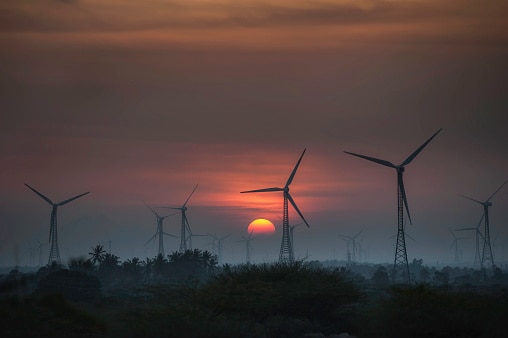Why Goldman Sachs has predicted India to become world’s second-largest economy by 2075

According to a recent report by Goldman Sachs, an American multinational investment bank, India is poised to overtake not only Japan and Germany but also the United States and become the world's second-largest economy by 2075.
As the current fifth-largest economy globally, India's projected ascent is fueled by several factors. With a burgeoning population and advancements in innovation and technology, the country is expected to claim the second-largest economy spot within the next 50 years, surpassing all major competitors except China.
As India’s population of 1.4 billion people becomes the world’s largest, its GDP is forecast to expand dramatically. Goldman Sachs Research projects India will have the world’s second-largest economy by 2075. https://t.co/CFFM0JsmEL pic.twitter.com/xHruyuSFex
— Goldman Sachs (@GoldmanSachs) July 6, 2023
The report by the company’s India economist, Santanu Sengupta, highlights the key driving factors behind India's economic growth forecast:
- Its tremendous population
- Its rapid progress in innovation and technology
- Its increasing higher capital investment and
- Its rising worker productivity
Population potential
With a population of 1.4 billion, India has a significant demographic advantage, which, when combined with effective utilization of its labor force, can unlock tremendous potential. The report emphasizes the importance of boosting labor force participation and investing in training and skilling India's talent pool to capitalize on this opportunity.

India's favorable demographics, including one of the best ratios between its working-age population and the number of dependents (children and elderly), provide a window for the country to establish manufacturing capacity, foster service sector growth, and develop infrastructure.
- This demographic advantage, coupled with technological advancements, places India in a favorable position to achieve substantial economic growth.
Understated technological innovation
The report also suggests that the progress India has made in innovation and technology is often overlooked and undermined. While demographics play a significant role, the report highlights that innovation and increasing worker productivity will be crucial drivers of India's GDP growth. To ensure sustainable growth, India needs to focus on achieving greater output for each unit of labor and capital within its economy.

Capital investment is identified as another major driver of India's future growth. As dependency ratios decrease, savings rates are expected to rise, leading to more capital availability for investment.
- The report acknowledges the government's efforts in facilitating this investment, but it also emphasizes the conducive conditions for private sector capital expenditure.
- Given the healthy balance sheets of private corporations and banks, the potential for a private sector Capex (capital expenditure) cycle looks promising.
Green Energy
The Indian government is actively promoting the adoption of electric vehicles and green hydrogen, and has set a goal of attaining 500GW of renewable or clean energy capacity by 2030.

Since, India has declared its ambition to achieve net zero emissions by the year 2070, transitioning to renewable energy presents a significant investment prospect, albeit a time-consuming process.
The challenges
While India's large population offers a tremendous opportunity, effectively utilizing the labor force and increasing labor force participation are critical challenges.
The report emphasizes the need to create employment opportunities and simultaneously focus on training and upskilling the workforce. It also highlights the gradual demographic transition occurring in India compared to the rest of Asia, primarily due to a slower decline in birth and death rates.
A warning
It also warns that India's potential may be compromised if its labor force participation rate does not increase. Over the past 15 years, the labor force participation rate has declined, particularly among women. By providing more opportunities, especially for women, and addressing the gender disparity in labor force participation, India can strengthen its labor force and unlock further growth potential.

